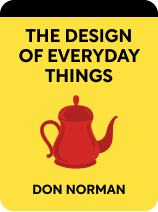

This article is an excerpt from the Shortform book guide to "The Design of Everyday Things" by Don Norman. Shortform has the world's best summaries and analyses of books you should be reading.
Like this article? Sign up for a free trial here .
What is a root cause failure analysis? How can it help you create better designs?
When a design fails, you can use a root cause failure analysis to figure out what happened. These anlayses are important to bettering designs.
Read more about how to do a root cause failure analysis and what it means for designs.
When Designs Fail: Doing a Root Cause Failure Analysis
Root cause failure analysis helps us make sense of other people’s behavior. To understand our own behavior, we turn to stories. Humans are born storytellers. When we’re faced with a jumble of information, our natural instinct is to organize it into a story that explains cause and effect. Stories help us make sense of our world and our place in it.
Finding the Root Cause
When accidents happen in industrial settings, a root cause failure analysis is usually performed. If the cause is technology-related, there is a full-scale investigation into the root problem, and engineers continue testing until the problem has been designed out. But if human error is discovered, the investigation usually stops immediately. Someone is held accountable and the system moves on unchanged.
Aviation history provides an example here too, this time of a 2010 crash involving a US Air Force fighter jet pilot. The particular type of plane the pilot was flying at the time had a history of malfunction that caused oxygen deprivation for the pilot. The official Air Force investigation into the crash concluded that the cause was human error—the pilot had failed to recognize the problem and correct the dive. Years later, the Department of Defense reanalyzed the case and concluded that, while the Air Force report was technically correct, it stopped before asking the crucial question: why didn’t the pilot notice or correct the problem? Given the nature of the crash and the history of the plane, it’s likely the pilot was already unconscious due to lack of oxygen. Is that human error? A root cause analysis can tell.
One tool for a more effective root cause analysis is the “Five Whys,” developed by Sakichi Toyoda, the founder of Toyota Industries. As the name suggests, Toyoda’s idea was to ask “why?’ five times in order to find the true root of a problem. In reality, the number can vary, but the core idea is to push past the initial answer to a problem to find underlying causes. This technique is still in use today at Toyota.
Even when a true root cause of an accident is determined, there is always pushback to the idea of changing the system, since change is difficult and often costly. There is also a cultural element here: we are so used to the idea of human error that people deemed responsible for accidents usually agree that they were, even if other people have made the same mistake. This makes it hard to reframe as system error.

———End of Preview———
Like what you just read? Read the rest of the world's best book summary and analysis of Don Norman's "The Design of Everyday Things" at Shortform .
Here's what you'll find in our full The Design of Everyday Things summary :
- How psychology plays a part in the design of objects you encounter daily
- Why pushing a door that was meant to be pulled isn't your fault
- How bad design leads to more human errors






